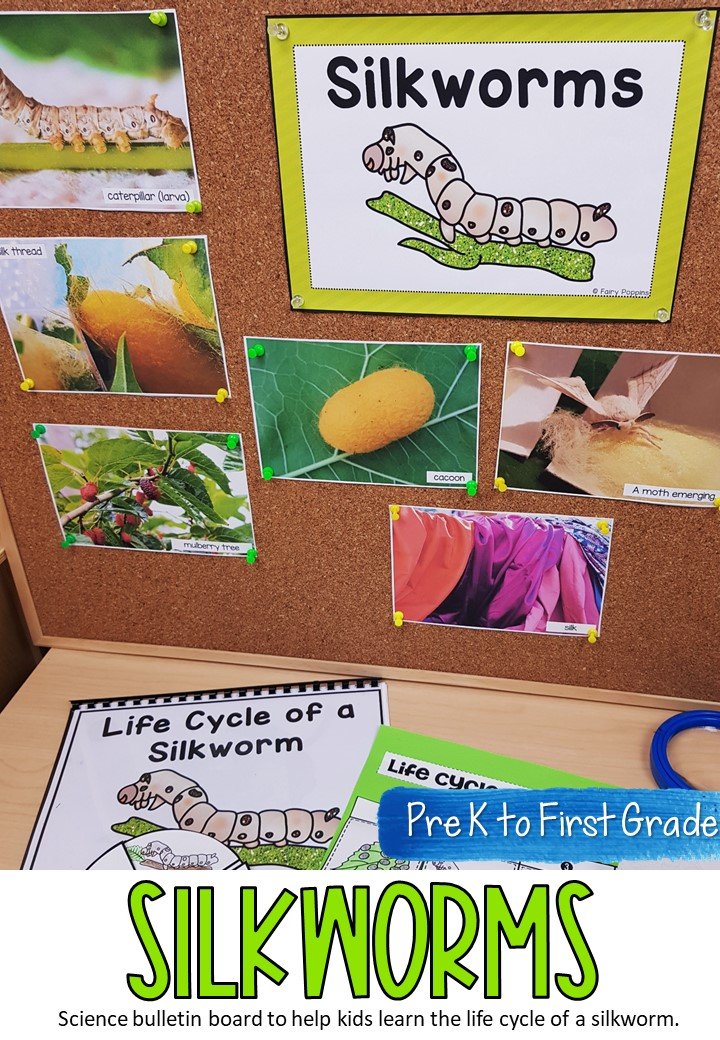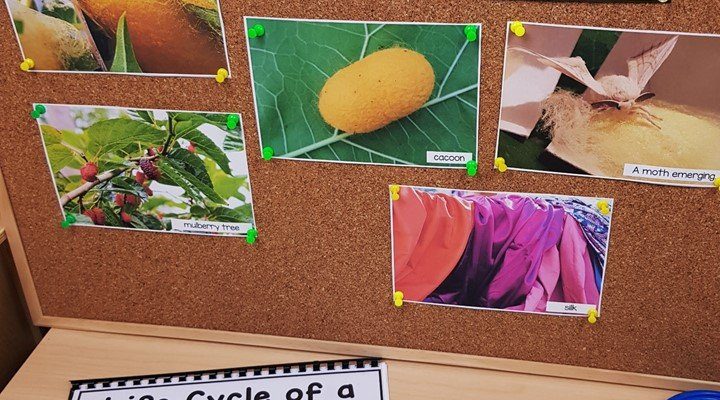
Using silkworms in science projects allows students to observe real-life cycles and transformations. This hands-on experience can ignite curiosity and deepen understanding in a way that textbooks simply can’t. Whether you’re a teacher looking to enhance your curriculum or a parent exploring educational ideas for your kids, silkworms offer an engaging way to bring science to life.
Understanding Silkworm Life Cycle
Let’s kick things off by exploring the life cycle of the silkworm. Silkworms, or *Bombyx mori*, go through a fascinating transformation known as complete metamorphosis. This cycle has four stages: egg, larva (caterpillar), pupa (cocoon), and adult moth.
During the **egg stage**, tiny eggs (which look like miniature pearls) hatch into larvae after about ten days. Once hatched, the larva begins its most active stage—eating. Silkworms primarily consume mulberry leaves, and they need to eat a lot to grow. In fact, they can increase their size up to 10,000 times during this stage!
After about 4 to 6 weeks of feasting, the larvae enter the **pupal stage**. Here, they spin a silky cocoon around themselves, which is where the amazing magic happens. Inside this cocoon, the silkworm undergoes a transformation. After about 2 weeks, they emerge as beautiful adult moths, ready to start the cycle anew. Understanding this cycle helps students grasp important biological concepts like life stages, growth, and the importance of ecosystems.
Setting Up Your Silkworm Project
Now that you’re excited about silkworms, how do you set up your own educational project? First, you’ll need supplies and a suitable environment. Silkworms require a warm and humid environment. A simple container with good ventilation works well. You can use a plastic bin or even a glass jar—but make sure it’s not too small!
Next, gather mulberry leaves, which are the silkworms’ favorite food. If you can’t find fresh leaves, dried leaves can sometimes work, but they’re not as nourishing. Remember to keep the leaves fresh and clean, as your little worms will only thrive with proper care.
Once your setup is ready, you can order silkworm eggs or larvae from reputable online suppliers. They usually come with care instructions, which are easy to follow. The hands-on process of raising silkworms provides a great opportunity for students to learn about responsibility through caring for living organisms.
Conducting Observations and Experiments
With everything set up, it’s time for the fun part: observing your silkworms! Keep a detailed journal where students can note their findings. Watching the silkworms grow and change is a fantastic hands-on experience.
You can encourage students to measure the worms’ growth over time. For instance, they can take daily or weekly measurements and record observations about their eating habits and environment. It’s a great way to practice scientific methods like hypothesis testing and data collection.
Additionally, consider conducting experiments. For example, you could change the temperature or humidity and observe how it affects their growth. Here’s the thing: these small experiments can lead to discussions about how environmental factors impact living things. It’s not just a science project; it’s a window into the larger world of biology!
Learning About Silk Production
One of the most exciting elements of working with silkworms is learning how silk is produced. When silkworms form cocoons, they create silk threads that can be harvested. This not only ties into lessons about life cycles but also introduces students to topics like sustainability and industry practices.
When the cocoons are ready, you can gently collect them. Here’s where you can dive deeper into discussions about silk production. Talk about how silk has been an important part of human culture for thousands of years. You might even explore where silk comes from globally and how it impacts economies.
Involving students in the silk harvesting process can also open up conversations around ethical practices in the industry. Discuss the differences between wild silk and cultivated silk. This sparks larger discussions about sustainability, conservation, and the impact of human activity on nature.
Benefits of Using Silkworms in Education
Incorporating silkworms into educational science projects offers a myriad of benefits for students. First, they help develop a sense of responsibility. Caring for live creatures can foster empathy and respect for life.
Second, silkworm projects enhance observational skills. Students learn to pay attention to details and notice changes over time. This critical thinking skill is essential in scientific inquiry and everyday life.
Finally, working with silkworms introduces students to the scientific method. They learn how to formulate questions, create hypotheses, and document results. All of these skills are transferrable to other scientific areas, making silkworms an excellent educational tool.
Challenges and What to Watch For
Of course, like any good educational project, there can be challenges. Silkworms are sensitive to their environment. If it gets too hot or too cold—or if they run out of food—they can become sluggish or die.
Regular checks on their habitat are essential. This includes monitoring temperature, humidity, and food supply. Students should learn how to troubleshoot any issues that arise. For example, if the worms are not growing, it might be due to lack of proper nutrition or an unsuitable environment.
Another challenge is the potential for tiny pests. Keep an eye out for mold or small bugs that could harm your silkworms. Prompt action can prevent these issues from ruining your project. Educating students about problem-solving in a real-life context is a key part of the learning experience.
Using silkworms in educational science projects is not just an engaging way to explore biology; it’s a journey into the heart of nature. From understanding life cycles to discussing sustainability, these tiny creatures offer a wealth of knowledge just waiting to be discovered.
As students care for and observe their silkworms, they’ll learn valuable lessons that extend beyond the classroom. They’ll develop skills that help them think critically, solve problems, and empathize with living beings. So, whether you’re a teacher crafting a new lesson plan or a parent seeking exciting educational projects, silkworms can certainly weave a beautiful story of learning!

